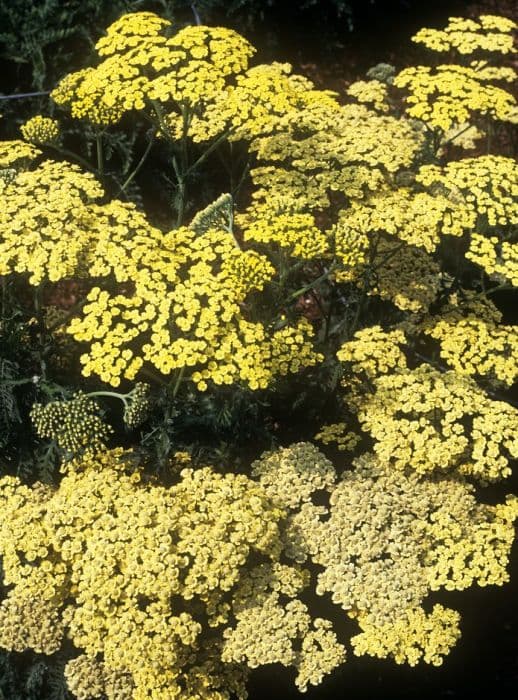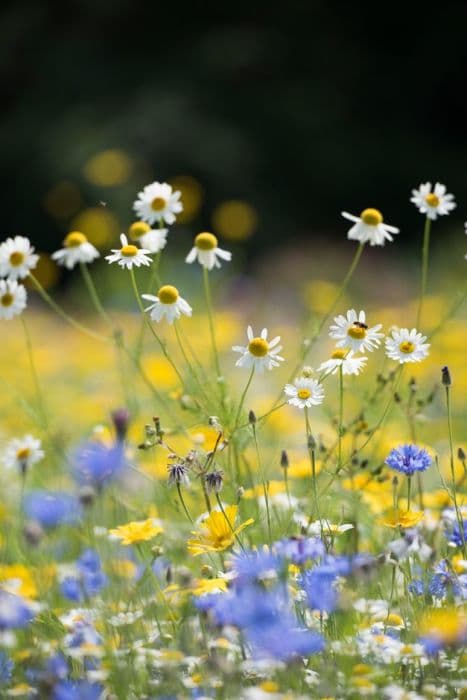Senecio 'Drysdale' Brachyglottis (Dunedin Group) 'Drysdale'

ABOUT
The Brachyglottis 'Drysdale' is an evergreen shrub that features a dense and rounded shape. The plant has a robust, bushy appearance, primarily characterized by its foliage and flowers. The leaves are grey-green with a felty texture, giving them a soft, downy look. They are oval to lance-shaped, often with a slightly wavy or toothed edge, and can catch the light, giving the plant a silvered appearance. During the blooming season, Brachyglottis 'Drysdale' comes alive with sunny, daisy-like flower heads. These blooms are typically bright yellow, forming attractive contrasts with the foliage. The flowers are arranged in loose clusters at the tips of the branches, and each bloom consists of a central disk surrounded by radiating petals that draw attention and may attract pollinators to the garden. Overall, Brachyglottis 'Drysdale' presents itself as a sturdy, compact shrub with distinctive foliage and cheerful flowers that can make it a highlight in a garden setting. It lends itself well to a variety of uses, including borders, as a low hedge, or even as a specimen plant, providing year-round interest and color. The plant is often appreciated for its ability to withstand coastal conditions and its low-maintenance nature.
About this plant
 Names
NamesFamily
Asteraceae
Synonyms
Dunedin Brachyglottis, Drysdale Senecio
Common names
Senecio 'Drysdale', Senecio glastifolius 'Drysdale', Brachyglottis 'Drysdale'.
 Toxicity
ToxicityTo humans
The Brachyglottis 'Drysdale', more commonly known as simply Brachyglottis, is not widely regarded as a toxic plant to humans. There is little to no evidence of severe toxicity in humans resulting from ingestion of this plant. However, as with many plants, it is generally advisable not to eat Brachyglottis due to the potential for mild stomach upset or an allergic reaction in some individuals. If any part of the plant is ingested and adverse symptoms occur, medical advice should be sought.
To pets
The Brachyglottis 'Drysdale', commonly referred to as Brachyglottis, is not known for being highly toxic to pets. There is limited information about its toxicity in domestic animals such as cats and dogs. However, it is always prudent to prevent pets from ingesting plants as they could potentially cause mild gastrointestinal upset or an allergic reaction. If you suspect your pet has consumed parts of the Brachyglottis and is showing signs of distress, contact your veterinarian for advice.
 Characteristics
CharacteristicsLife cycle
Perennials
Foliage type
Evergreen
Color of leaves
Silver-grey
Flower color
Yellow
Height
3 feet (0.91 meters)
Spread
3 feet (0.91 meters)
Plant type
Shrub
Hardiness zones
8
Native area
New Zealand
Benefits
 General Benefits
General Benefits- Easy to Grow: Brachyglottis 'Drysdale' is a low-maintenance plant that can thrive with minimal care, making it ideal for gardeners of all skill levels.
- Drought Tolerance: This plant is highly resistant to drought, reducing the need for frequent watering and making it suitable for xeriscaping.
- Attracts Wildlife: It produces flowers that attract bees, butterflies, and other pollinating insects, enhancing biodiversity in the garden.
- Evergreen Foliage: Brachyglottis 'Drysdale' offers year-round visual interest with its evergreen leaves, providing color even in the colder months.
- Wind Resistance: The plant's robust nature makes it suitable for coastal gardens and windy areas where many other plants would struggle.
- Landscape Versatility: It can be used in a variety of garden designs, including borders, banks, and as a low hedge or ground cover.
- Low Pruning Requirement: Brachyglottis 'Drysdale' has a natural rounded shape, reducing the need for regular pruning.
- Disease Resilient: It's generally resistant to common garden pests and diseases, ensuring a healthy and attractive plant with fewer chemical treatments.
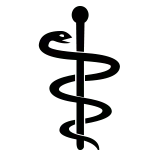 Medical Properties
Medical PropertiesThis plant is not used for medical purposes.
 Air-purifying Qualities
Air-purifying QualitiesThis plant is not specifically known for air purifying qualities.
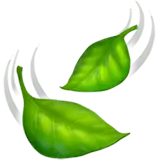 Other Uses
Other Uses- Brachyglottis 'Drysdale' can serve as a low maintenance and drought-tolerant hedge in coastal gardens, withstanding salt-laden winds and providing a natural boundary.
- The plant is suitable for wildlife gardens as its flowers attract beneficial insects like bees, which are crucial for pollination.
- Its dense foliage is often utilized in garden design to create contrasting textures when paired with plants that have finer leaves.
- Brachyglottis 'Drysdale' can be used in rock gardens, thanks to its tolerance of poor soils and ability to grow in rocky, free-draining substrates.
- The plant is sometimes planted on green roofs, where its hardiness and low-growing nature make it an appropriate choice for the challenging conditions found there.
- During the Christmas season, the silver foliage might be cut and used for decorative wreaths or as part of festive floral arrangements.
- Gardeners can use this plant for erosion control on slopes or banks, as its root system helps to stabilize the soil.
- Photographers and artists may appreciate the plant for its aesthetic qualities, such as its structural form and color, using it as a subject in their work.
- As a hardy and versatile plant, Brachyglottis 'Drysdale' is an excellent choice for coastal-themed miniature gardens or fairy gardens.
- The silver-gray foliage can be a backdrop for garden sculptures, features, or against colorful walls to make their colors pop.
Interesting Facts
 Feng Shui
Feng ShuiThe Senecio 'Sunshine' is not used in Feng Shui practice.
 Zodiac Sign Compitability
Zodiac Sign CompitabilityThe Senecio 'Sunshine' is not used in astrology practice.
 Plant Symbolism
Plant Symbolism- Resilience: Brachyglottis 'Drysdale' is known for its ability to withstand strong winds and poor soils, symbolizing the capacity to endure and thrive under challenging conditions.
- Growth: As a garden plant that fills space effectively, it represents personal or spiritual growth that expands to fill one's environment or circumstances.
- Adaptability: This plant's versatility in different landscapes signifies flexibility and adaptability to life's changes.
- Protection: With its evergreen nature and dense foliage, it serves as a symbol of protection, offering a safe haven or shelter.
 Water
WaterThe Senecio 'Drysdale', commonly known as Brachyglottis ‘Drysdale’, prefers a well-draining soil and does not need excessive watering. Water the plant thoroughly when the top inch of the soil feels dry to the touch, which may be approximately every 7 to 10 days, depending on the environmental conditions and season. Ensure you provide enough water to reach the roots without waterlogging the soil, using about a half gallon for medium-sized plants during each watering session. During the winter months, reduce watering frequency to promote a rest period for the plant.
 Light
LightThe Senecio 'Drysdale' needs full sun to partial shade to thrive, with a preference for bright, indirect sunlight. The best spot for this plant would be a location where it can receive at least 4 to 6 hours of sunlight per day, but is protected from the harsh afternoon sun to prevent leaf scorch.
 Temperature
TemperatureThe ideal temperature range for the Senecio 'Drysdale' is between 50°F and 75°F. It is a hardy plant that can tolerate temperatures as low as 30°F and as high as 85°F, but it should be protected from frost and extreme heat. For best growth and health, aim to maintain a stable environment within the ideal range.
 Pruning
PruningPruning Senecio 'Drysdale' helps maintain its shape and encourages bushier growth. Trim the plant in late winter or early spring before the onset of new growth. Remove any dead or damaged stems and shape the plant as desired. Pruning can be done annually or as needed to control the size of the plant.
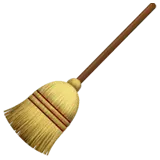 Cleaning
CleaningAs needed
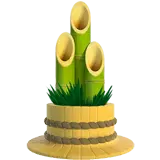 Soil
SoilThe best soil mix for Senecio 'Drysdale' should be well-draining with a mixture of loam, peat, and sharp sand to ensure it does not retain excessive moisture. A slightly acidic to neutral pH between 6.0 and 7.0 is ideal. Regular garden soil improved with compost and ensuring adequate drainage will benefit healthy growth.
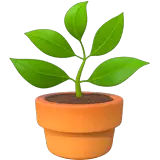 Repotting
RepottingSenecio 'Drysdale' does not need frequent repotting and should be repotted only when it has outgrown its current container, typically every 2 to 3 years. Choose a slightly larger pot to facilitate new growth.
 Humidity & Misting
Humidity & MistingSenecio 'Drysdale' is adaptable to various humidity levels but thrives best in moderate humidity conditions. It does not require high humidity levels and can tolerate the drier air found in most home environments.
 Suitable locations
Suitable locationsIndoor
Place in bright, indirect light and avoid overwatering.
Outdoor
Full sun to part shade, shelter from extreme weather.
Hardiness zone
8-10 USDA
 Life cycle
Life cycleThe Brachyglottis 'Drysdale', commonly known as 'Dunedin Group' shrub, begins its life cycle with seed germination, where the seed absorbs water and swells, initiating the development of the seedling. As the seedling emerges, roots begin to grow downward into the soil, while the shoot pushes upward toward the light, beginning the vegetative growth phase characterized by leaf development and branching. During this vegetative stage, the plant's significant energy is dedicated to growing leaves and stems, expanding its ability to photosynthesize and mature. Once maturity is reached, the Brachyglottis 'Drysdale' enters the reproductive stage, developing flower buds that eventually open into yellow, daisy-like blooms that attract pollinators essential for plant fertilization and seed production. After pollination and fertilization, seeds develop, are dispersed by various means, and eventually fall to the ground, completing the life cycle when they germinate and grow into new plants. Throughout its lifetime, the plant experiences cycles of growth and dormancy, responding to seasonal changes, with some plants living for many years as perennials.
 Propogation
PropogationPropogation time
Spring to Summer
Propogation: The most popular method of propagating the Brachyglottis 'Drysdale', also known as the Dunedin Group 'Drysdale', is through semi-hardwood cuttings. This is typically done during the summer when the plant is actively growing. To propagate, a cutting should be taken from a healthy semi-hardwood stem that is about 4 to 6 inches (approximately 10 to 15 centimeters) in length. The lower leaves are stripped off, and the cut end can be dipped in a rooting hormone to facilitate root development. The cutting is then placed in a well-draining potting mix and kept moist; it should be positioned in a warm spot with indirect sunlight. Roots usually form within a few weeks, after which the new plant can be gradually acclimated to normal conditions and transplanted outside if desired.
